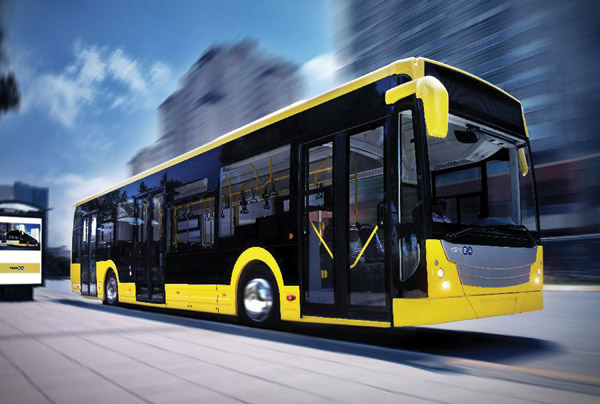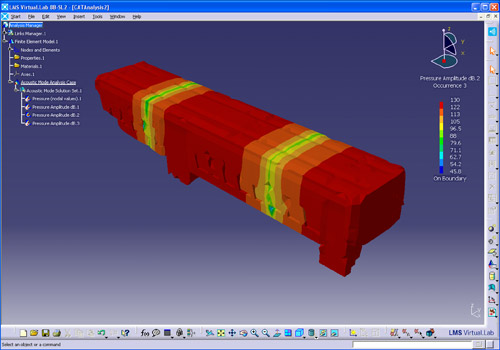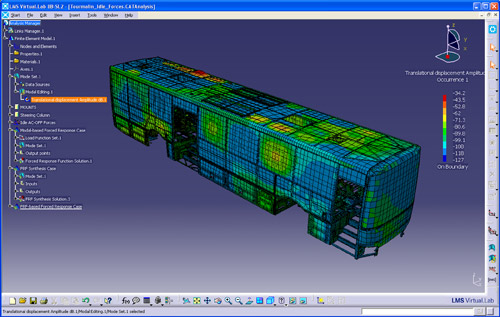LMS Virtual.Lab hastens and hones vehicle testing
By Steve Glad

A crisis can provide an opportunity for change and growth in a company. The Turkish bus manufacturer Temsa could not agree more, crediting the engineering firm LMS International for its bounce back from Turkey’s financial crisis and climb to the top of the global coach and bus market.
Founded in 1968 as part of the Sabanci conglomerate, Temsa made a comfortable living for decades fabricating buses for sale exclusively in Turkey according to designs from Mitsubishi Motors. However, in 2000 and 2001 with a devalued local currency, widespread unemployment, bank failures and financial collapse, Temsa bus sales all but dried up. The firm was on the verge of bankruptcy with 50 percent of its workforce gone.
In the midst of all this, a French distributor quickly needed a fleet of 200 rugged and dependable buses — the type of vehicles Temsa made to withstand the rigors of punishing Turkish roads. The distributor specified the German MAN engine and Temsa engineers scrambled to modify the bus design. Their effort resulted in the launch of the original Temsa Safari long-distance coach, which soon became popular in Europe and saved the company from collapse.

Temsa has gone global since those dark days nine years ago, establishing international offices in Mechelen, Belgium and doing brisk sales across most of Europe, particularly in France, Germany and Italy.
The company says business has also climbed in the Middle East, Africa and Russia, with inroads into Indian, Chinese and U.S. markets. Exports to 40 countries now account for 75 percent of Temsa sales.
From a low of just a handful of vehicles a year and only two models, production has ramped up to meet increased demand for Temsa’s current range of 12 models. They include luxury long-distance coaches, a variety of smaller, lightweight midi buses and a newly launched city bus, the Avenue.
Focus on small customized orders
Temsa attributes these gains to its focus on a niche market design that its bigger competitors have largely shunned. Temsa has become known for fulfilling fast-turnaround, small-scale orders for customized buses that meet very particular customer requests, and typically developed in six to 12 months. Temsa offers an extensive range of 186 variants, all of which can be customized with different engines, transmissions, frames, suspensions and interiors.
A big job for a small staff
A relatively small team of 90 design engineers at the Marmara Research Center in the city of Gebze near Istanbul completes this development work for all Temsa buses. The company says it is a combination of professional enthusiasm and advanced engineering technology.
“Temsa really gives its engineers freedom,” says Bertan Bayram, Temsa CAE and Test Team Leader at the research center. “Our engineers design something and the next day they see the change on the bus.”
Enter LMS International
One of Temsa’s first steps into the global arena came five years ago in its partnership with LMS International, which began with a simple initiative to attain the necessary technological skills, software and hardware to virtually test the durability of its buses.
Previous methods involved long-haul road testing on a commercial test track, usually taking about three to six months. If a part failed or cracked, it would be repaired and the test would continue. This method was by no means foolproof and left room for doubt. The engineers needed a better representation of the actual loads vehicles would encounter on real roads. Also, they could not perform durability testing until a bus prototype was nearing the end of its development cycle when major changes were difficult and costly.
The LMS hybrid road approach
To overcome these drawbacks, Temsa adopted the LMS hybrid road approach to accurately predict the fatigue life of a new vehicle early on. The company developed the model from its work in the automotive industry. The hybrid road approach features the LMS Virtual.Lab multibody simulation and fatigue life prediction software in combination with durability load data analysis and a test system for measurement, data acquisition and signal analysis.

First, a fully loaded, instrumented processor or “mule” vehicle driven over typical routes in the region allow accelerometers and strain gauges on the wheel center and suspension measurements to create a customer usage profile.
Next, analysis tools determine the fatigue content for each signal measurement part. The cumulative impact of small but highly repetitive loads such as a standard road surface vibration are put together with very large but infrequent loads, such as the wheel hitting a pothole. The LMS data analysis system automatically determines the damage content of these signals, identifies which portion of the CUP test drive produced these loads, and categorizes signals based on amplitude, repetitiveness and duration.
Removing the non-damaging and extraneous portions of signals, the tool generates a condensed wheel load data file of cumulative damage over time.
From this compressed wheel load data file, an inverse transfer function back-calculates an effective road profile of vertical wheel displacements that are more dependent on the road surface characteristics than on the individual vehicle. The road profiles are then used as input to determine fatigue life of the individual components in the bus suspension and frame.
To do this the team counts on the LMS Virtual Lab to simulate aspects of the bus design and predict the fatigue life.
The benefits of a new process
Bayram says engineers can now do a durability assessment in five to seven days. He says the end result is maximized fatigue life combined with the best-possible lightweight design for improved fuel economy.
According to Bayram, shaping the profile of the entire frame to develop the Temsa Space Frame, which is 30 percent lighter than other comparable frames, minimized vehicle weight on the Safari HD. He says this simulation technology also facilitated alternative Temsa bus designs, such as the Avenue city bus based on advanced lightweight materials. The entire roof and floor of the Temsa Avenue is composite-based with high strength-to-weight ratios, making these buses lighter and safer at the same time.
Expanding the use of LMS solutions
Following the success of the hybrid road approach, Temsa most recently increased the range of LMS test systems at its Gebze research center and has added a LMS Virtual Lab Noise and Vibration solution to its repertoire of LMS tools. This gives Temsa engineers the capability to investigate the best placement and materials for engine mounts, for example, and determine noise and vibration flows into the cabin interior through transfer path analysis, frequency response function calculations and acoustic coupling. Such capabilities further reduce bus development times by as much as 10 percent but also helps avoid NVH issues with customers, many of whom have sophisticated NVH testing systems for evaluating vehicles before accepting an order.
Temsa also continues to call on LMS Engineering Services for support when needed, as on a recent torsional vibration problem. After considerable NVH testing, Temsa engineers determined that the vibration was not originating in the Temsa design, but rather a torsional vibration in the powertrain — a transmission problem, which the transmission manufacturer then corrected. Temsa did not have the specialized equipment for this rotating shaft measurement and LMS Engineering Services measurements were able to confirm Temsa’s suspicions. BR

Is it possible that the durability testing can extend to things like heat, dust, water penetration, and humidity? Thank you.